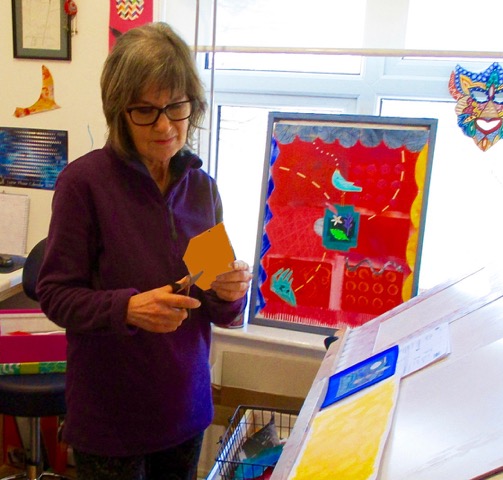
YORK artist Linda Combi was so struck by a Channel 4 News story on The Last Gardener Of Aleppo that she has responded with an exhibition of the same title.
“This work is a new departure for me and it’s taken some time to complete, but at last it’s nearly ready,” she says.
Linda’s artwork will be on show from February 25 to April 6 at The Angel on the Green café bar – “where the footfall is huge,” she says – in Bishopthorpe Road, York.
“The news story featured Abu Waad, who ran a garden centre in the besieged city Syrian city of Aleppo, assisted by his 12-year-old son Ibrahim,” she recalls.
“Throughout the film, Abu Waad – his name means ‘Father of the Flowers’ – described his love and admiration for flowers and plants. This last remaining garden centre was an oasis of calm and beauty for the citizens of Aleppo, who were experiencing death and destruction all around them.”
Not long after the film was made in 2016, Abu Waad was tragically killed by a bomb that fell nearby.
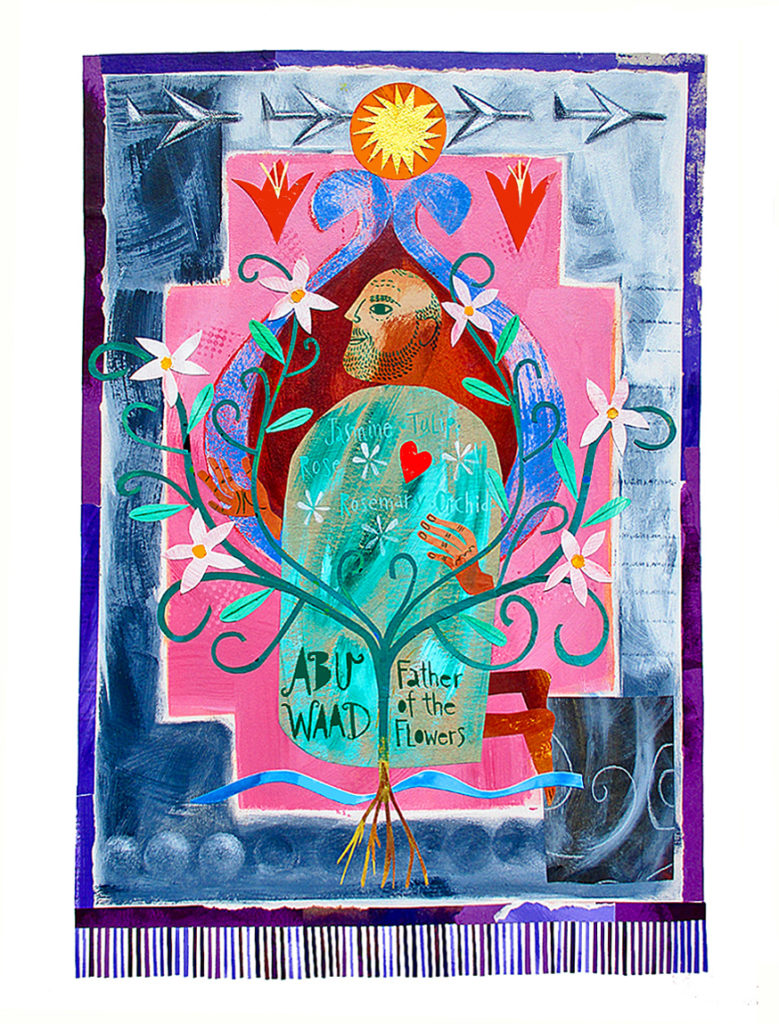
“His garden centre was closed and his son Ibrahim was left fatherless. I wanted to commemorate Abu Waad’s life and work through art and decided to hold an exhibition where 80 per cent of any proceeds from the exhibition and card sales would be divided between the charities UNHCR and The Lemon Tree Trust,” says Linda.
“Because of the continuing horrors being endured by the Syrian people, it feels important to celebrate life and beauty at this time.”
Many of Linda’s pieces in the exhibition are illustrations inspired by the words of Abu Waad and based on Syrian carpet designs found in her research. All the work is mixed media, incorporating painted papers, drawing, and stencil.
As well as work directly relating to the story of Abu Waad, further pieces take the theme of The Oasis in celebration of secure and beautiful places, such as gardens, set in harsh environments.
“The Lemon Tree Trust is involved in helping refugees create gardens in their strange new surroundings, and so I’ve included an artwork about the journeys made by refugees who often travel carrying seeds from home,” says Linda.
“Both the UNHCR and The Lemon Tree Trust have responded positively to this exhibition, offering materials for display and distribution. I’m grateful for the good work that they do.”
Linda’s The Last Gardener Of Aleppo will be launched on February 25 from 8.30pm.
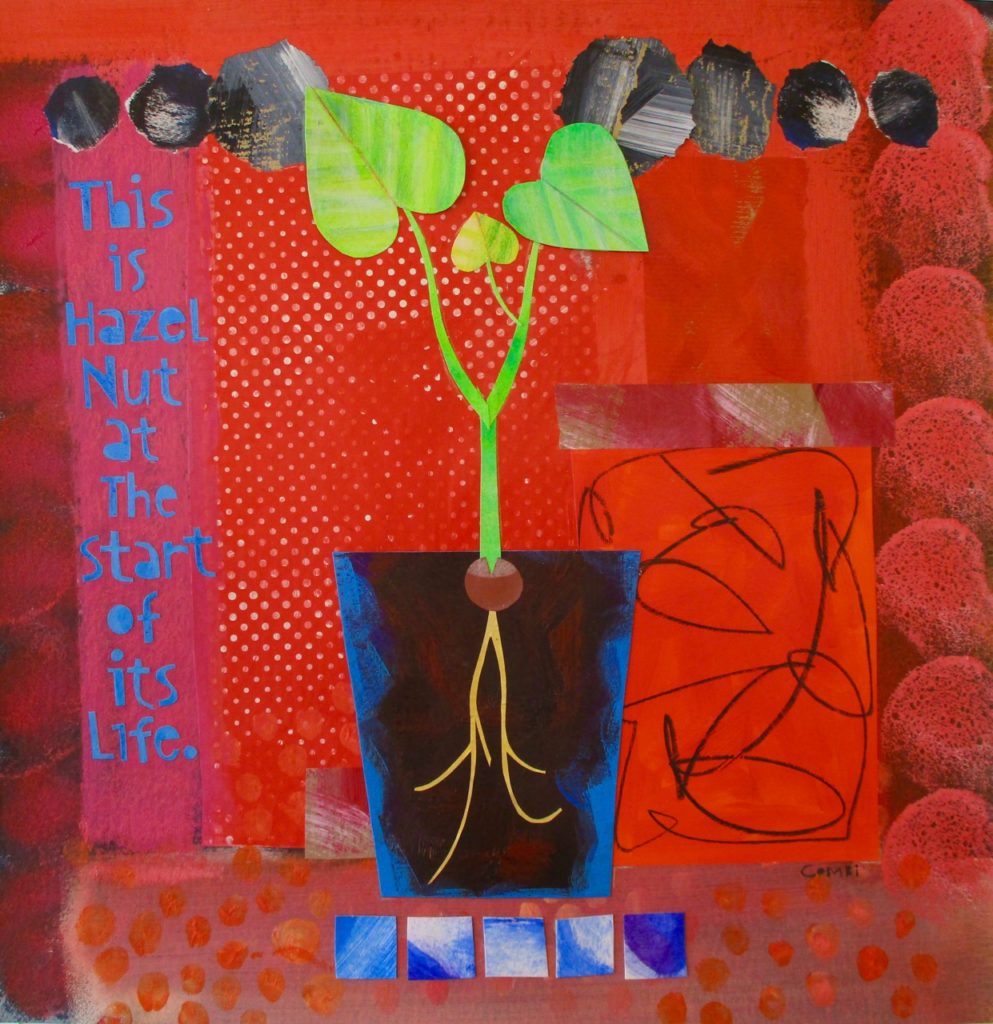
Here, Charles Hutchinson interviews Linda Combi ahead of The Last Gardener Of Aleppo opening.
What form did your research take, Linda?
“I watched the Channel 4 News story The Last Gardener Of Aleppo over and over again on YouTube, drawing Abu Waad and his son Ibrahim, and taking down the words of Abu Waad about his love of flowers and plants.
“I then found images of Syrian carpets on the net, but also visited the Islamic Room of the British Museum to draw from their decorative tiles.
“I needed images of drones, of bombers, and of destruction from bombing, sadly too often available on the news.
“Finally, I downloaded a map of Aleppo, which I then used for my collages. York Central MP Rachael Maskell’s talk at a public meeting a few years ago, about how events in Syria have unfolded, was really informative, and I thank her for that.
If the pen is mightier than the sword, can art be mightier than the bomb (in the long run)?
“I’ve been very inspired by the works of Banksy, particularly his public art on The Wall in Palestine, and his Bethlehem ‘Walled Off Hotel’.
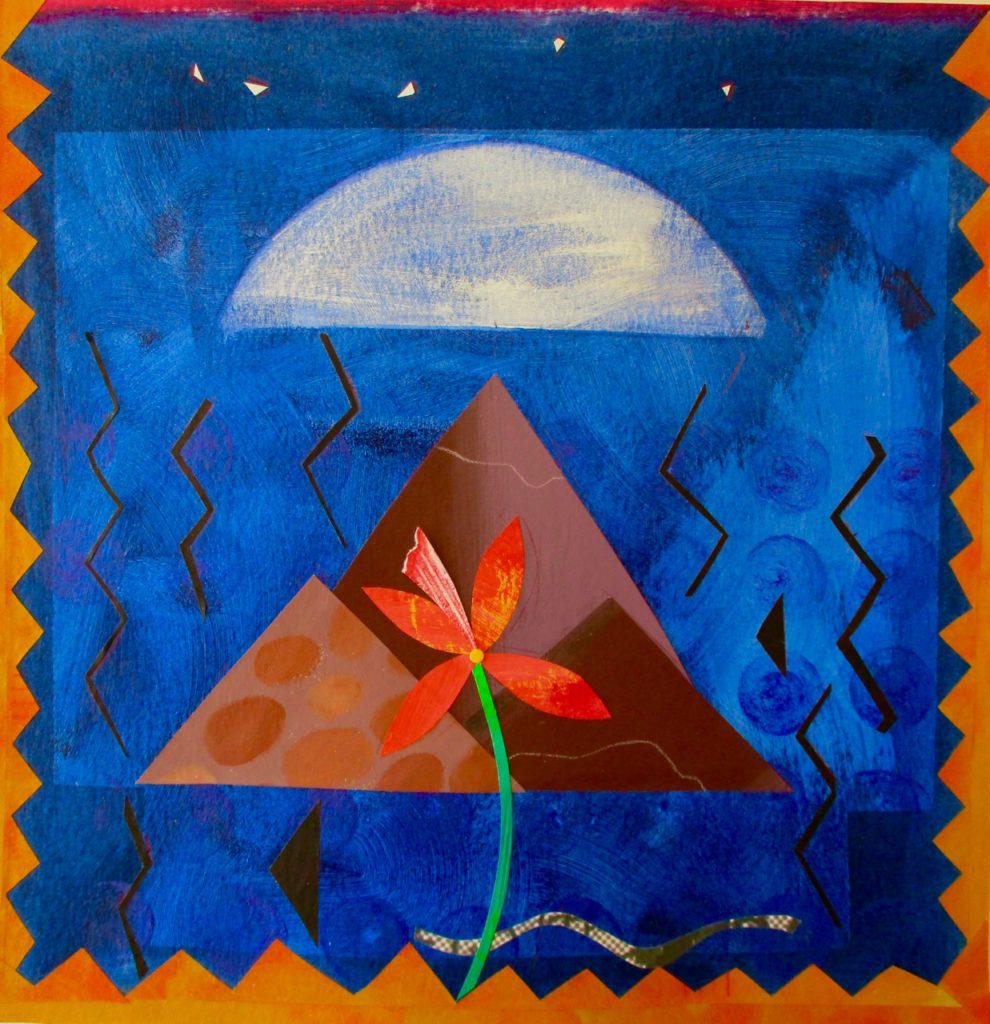
“Political cartoons are powerful instruments for highlighting hypocrisy and dictatorship. Picasso’s Guernica is horribly relevant today.
“OK, these art forms haven’t stopped the bombing, but they have shone a light on the atrocities. As well as enriching our lives and reminding us of joy, art can be critical and informative and have the power to undermine those in power.
“I’ve been hugely impressed by the creativity shown in the placards seen on the streets during protests during the past few years.”
Poppies are so evocative of the First World War. Your art is embracing flower power too. What makes them such a potent symbol in the face of human atrocities?
“As a San Francisco hippie who discovered the joys of gardening on arriving in the UK, I do believe in flower power.
“Abu Waad’s flowers brought moments of joy to the citizens of Aleppo during the destruction of that city, and who saw death all around them. He believed that flowers could ‘nourish the soul’.

“I’ve always been impressed by how flowers and their ’seasons’ are so important to the British. The arrival of snowdrops, then the daffodils, followed by bluebells and tulips: all herald the end of a long and dark winter. So, in an extreme situation like war, flowers bring a sense of the life force even more powerfully.”
What work do the charities UNHCR and The Lemon Tree Trust do?
“The UNHCR is the global United Nations Refugee Agency, which aims to save lives, protect rights and help refugees to work for a peaceful and productive future.
“They also help displaced communities and stateless people, and they believe everybody has the right to seek asylum from violence and persecution, war or disaster. “Their work is varied, involving education, providing shelter, protecting migrants at risk, and highlighting the desperate plight of migrants around the world.
“The Lemon Tree Trust believe that ‘gardening has the power to positively address issues of isolation and mental health’.
“They help to create community gardens in refugee camps by working with those refugees who are so very far from home.

“The Refugee Garden at the Chelsea Flower Show was a moving example of how important this can be for refugees. One woman said, ‘We had so many flowers in Syria. This garden makes me happy’.”
What materials have the two charities offered for display and distribution?
“They’ve been very enthusiastic about the exhibition and have offered posters, leaflets, T-shirts and stickers, as well as publicising the exhibition on their social media.”
What are you working on next?
“The next project will be work with Refugee Action York on some teaching materials. I’d also love to do more T-shirt designs for the Good Organisation, who work with the homeless in York.
“As for personal work, I’ll be continuing the theme of migration, but this time the emphasis will be on borders.
“I’ve lived in San Diego for a time and have witnessed migrants being sent back over the border to Mexico after attempts trying to get into the USA.
“We walked along part of The Wall dividing Mexico and the USA and talked to border patrol officers there.
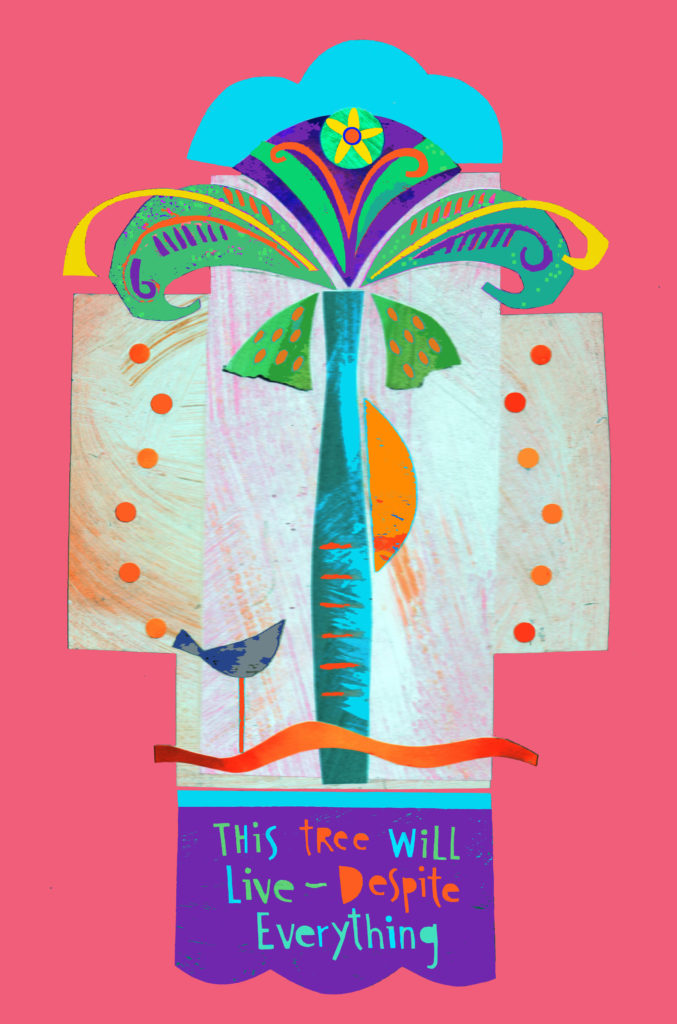
“My time in Israel also fed into my preoccupation with walls and divisiveness. My Sicilian ancestors came to the USA not knowing what the future held for them, but they were made welcome and did create a good life and a large family.
“I was welcomed to the UK many years ago, and so the issue of immigration has been central to my life.”
Will you be creating one of your humorous York calendars for 2021?
“It’s too late for a 2021 calendar but I’d love to create one for a charity.
“As for the York calendars, I feel that though the tourist boom in York might have boosted the economy, luxury flats and new cafes and restaurants aren’t inspiring to draw!
“However, I can imagine being enticed by the prospect of a calendar that would celebrate quirky, lesser-known pubs hidden away in York.”
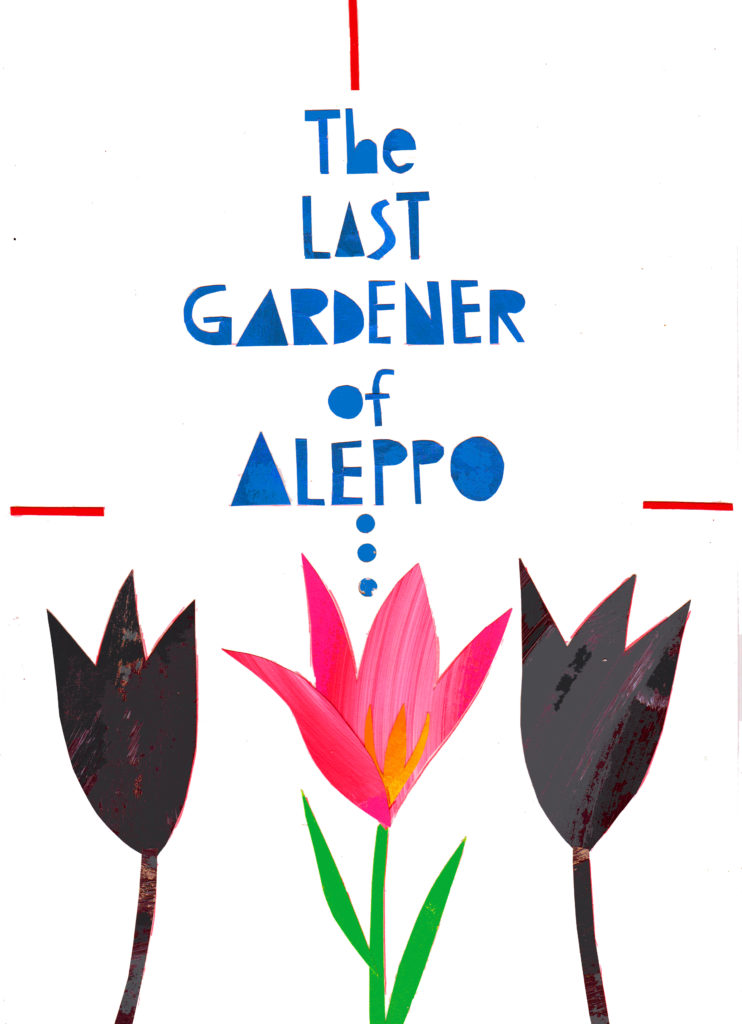
Linda Combi: The Last Gardener Of Aleppo exhibition, Angel on the Green, Bishopthorpe Road, York, February 25 to April 6.
